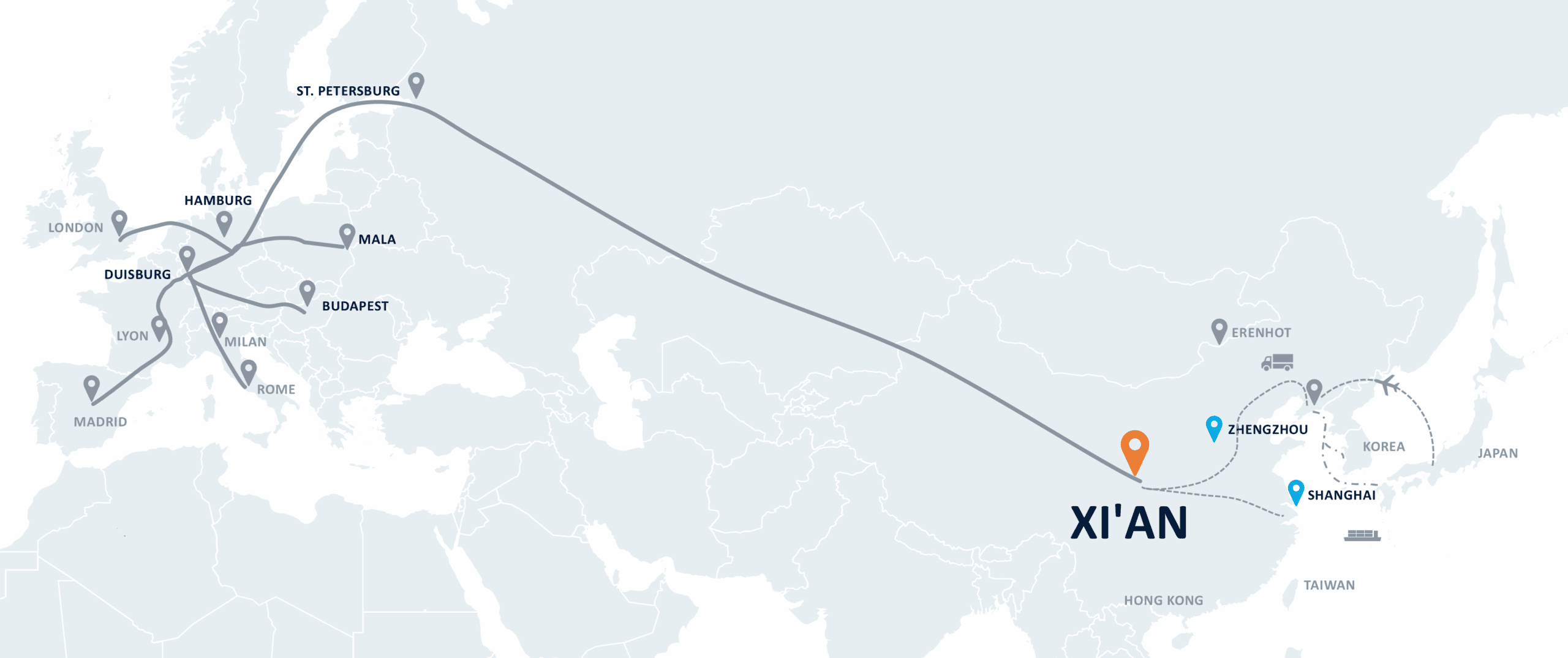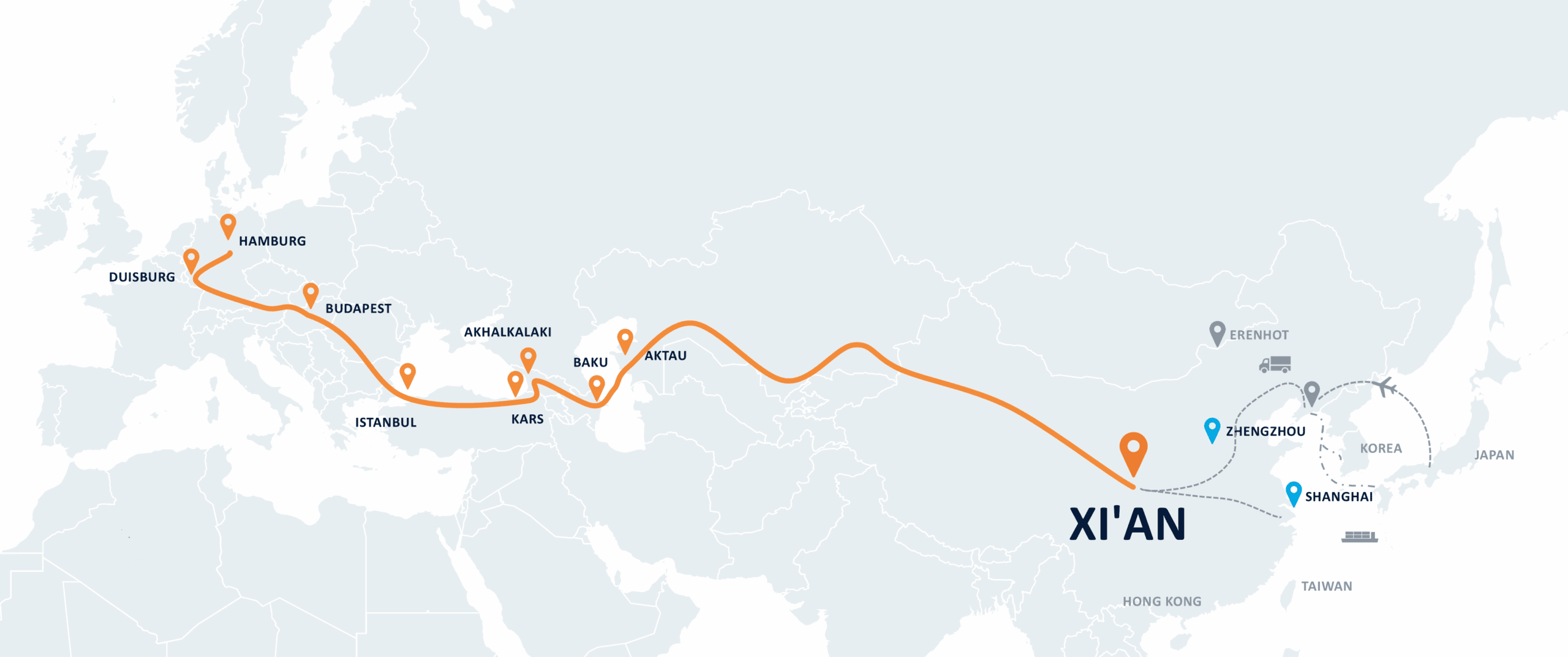Happening Now
On September 23, Polish Prime Minister Donald Tusk announced the reopening of border crossings with Belarus at midnight on September 25. Previously, citing national security concerns, the Polish government had declared an indefinite closure of all border crossings with Belarus starting the night of September 12, encompassing both road and rail routes. This move directly resulted in the complete suspension of China-Europe rail services through Poland. To date, numerous containers destined for the EU have been stranded at the Belarusian border. The cargo, including electronics, automotive parts, and textile materials, remains stuck, with some enterprises facing pressure from supply chain disruptions.
Although the China-Europe cross-border rail service between Poland and Belarus is expected to gradually resume operations starting September 25, the route will remain unstable in the short term. Over 300 freight trains are still in transit along this route. Once border crossings reopen, congestion is anticipated as backlogged cargo is cleared. Given the numerous uncertainties ahead, many Chinese shipping points are still exploring and evaluating alternative transportation options. Shippers are advised to conduct a multidimensional risk assessment and exercise caution in selecting suitable routes.
Alternative Routes
Dimerco and various rail platform companies have already introduced alternative routes. Customers can choose and adjust shipments via the Hamburg Special (St. Petersburg sea-rail route) or the Southern Corridor to Europe.
- Hamburg Special: Xi’an → Khorgas/Altynkol → Kazakhstan → St. Petersburg (Russia) via sea → Hamburg (Germany) via rail → Duisburg, Budapest

- Southern Corridor (across sea): Xi’an → Khorgas/Altynkol → Aktau (Kazakhstan) vis sea → Baku (Azerbaijan) via rail → Akhalkalaki (Georgia) → Istanbul (Turkey) → Budapest → Duisburg, Hamburg, Malaszewicze

Transit Time and Cost Assessment
Both alternative rail routes are not new initiative. Due to market demand, multiple trains have been operating to Europe along these routes. Based on past operations, transit time and cost comparisons are as follows:
- Transit time: Hamburg Special (via St. Petersburg sea-rail) takes approximately 22–25 days from departure to arrival. Southern Corridor requires 35–60 days from departure, with transit time highly affected by winter weather and Caspian Sea transshipment. (Station-to-station reference)
- Cost: According to last week’s rail pricing updates, the cost of both alternative routes is similar. Compared with the original Poland-Malaszewicze route, container costs have increased by USD 800–2,000 per 40 HQ, depending on the destination and route. Despite higher costs, given that air freight to Europe is fully booked with soaring rates, rail alternatives still offer significant price advantages.
Cargo Handling Recommendations by Stage
- In-transit cargo: Closely monitor cargo positions and contact your freight forwarder immediately. Work with rail operators to determine the best solutions based on real-time cargo status.
- Ready-to-ship but not yet dispatched cargo: Temporarily hold off on customs clearance and station entry. Evaluate alternative routes and prioritize between rail, air, and sea transport based on delivery urgency.
- Newly planned shipments: For urgent cargo, it is recommended to go directly on the North or South routes and monitor schedules. Due to concentrated short-term demand, alternative routes may have limited space, so early planning is advised. Non-urgent cargo may wait until the Poland segment route resumes before making adjustments.
Reliability and Development of China-Europe Rail in the Long Term
This incident may have a certain impact on market confidence in the short term. However, in the long run, the competitiveness of the China-Europe Rail depends on multiple factors:
First, its core advantage remains its transportation characteristics: “superior transit times compared to traditional sea freight and better cost-effectiveness than air freight.”
Second, the capacity assurance and stability of alternative routes will become key variables.
It is noteworthy that while alternative routes like the Hamburg Special via St. Petersburg currently face rising cost pressures, the fact that all available space was booked within two days of opening demonstrates strong market demand for China-Europe rail. This indicates that as long as alternative routes offer advantages over air and sea freight options, the China-Europe freight trains will continue to attract long-term attention.
Future developments will require close observation of alternative routes’ capacity expansion capabilities, schedule stability, and multimodal connectivity efficiency.
Responsive Solutions for Supply Chain Disruption
Following notification of the Poland-Belarus border closure, Dimerco activated its emergency plan to provide support for cargo at different stages:
- In-transit cargo: Real-time tracking using GPS and platform monitoring to provide updates on cargo position, transfer progress, and latest border status.
- Loaded but not yet cleared cargo: Temporary suspension of customs and station entry; actively coordinate with clients and offer air, sea, and rail alternatives.
- Unloaded/new bookings: Offer Hamburg Special as an alternative; with client approval, some shipments have been scheduled on the earliest available departure (Sep 27) to Europe.
- Clients opting to wait: Provide temporary storage at Xi’an rail consolidation warehouse and coordinate optimal solutions once the Poland-Belarus border reopens.
In a global supply chain environment prone to unexpected disruptions, flexibility is crucial. Leveraging its global service network, integrated logistics resources, and decades of market expertise, Dimerco helps clients respond rapidly under multimodal transport from sea, rail, and air, meeting diverse delivery needs and ensuring seamless supply chain operations.
We will continue to monitor the reopening of Polish border crossings and provide timely updates. For cargo currently or planned to be transported via the China-Europe Railway, contact Dimerco’s expert team for the latest route recommendations and tailored solutions.